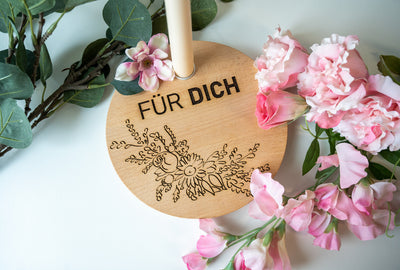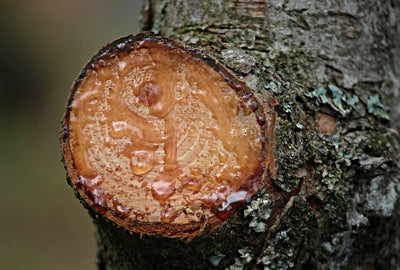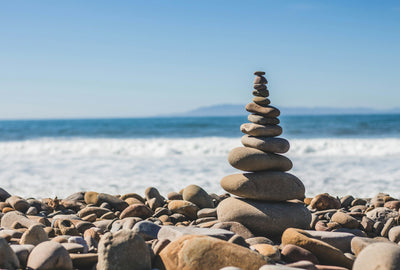With plywood you have the advantage over solid wood plates that it does not precipitation so fast and therefore has a higher shape stability: solid wood interacts with the environment by absorbing water at high humidity and returning water at low humidity. A Special manufacturing process inhibits the plywood this property and gives it a higher stability. The exact properties depend on different criteria such as the type of wood used, thickness and processing. Nevertheless, there is a residual risk that I remedy the plywood, as it is still a "vibrant" material. Therefore, you should not expose the wood to frequent temperature fluctuations and complain as possible. If you want to edit plywood with the Mr Beam laser cutter, we recommend the use of magnets to fix the wood.
Special manufacturing process for plywood
Plywood is created by connecting at least three well-dried thin wood layers to 90 degrees. The wood layers are glued together and pressed under heat influence. at three-layer plywood Soften the fibrous directions of the two outer wooden layers at right angles from that of the inner wood position. This, the previous dry drying of the layers and the pressing under heat effects limit the moisture-related source and shrinkage behavior. The finished plywood plate works at best very minimal, is solid wood to consequently dimensionally stable and you can better process and install it better.
Manufacturing from at least three layers This results from the crossroad layer or fiberization of the individual wood layers, wherein the middle opposite the two outer is offset at right angles. This scheme can be continued, which is why you find plywood plates in different thicknesses. Basically, you can assume that a thicker plate is more stable than a thinner from the same type of wood. However, stability is still influenced by other factors.
Gleaner, exterior treatment and purpose
Glue influences the robustness and weather resistance of plywood. If a use is exclusively indoors with at most low fluctuations of the humidity, you can Ready conscience on plywood with not weather-resistant glue. For outdoor use, on the other hand, you should pay attention to weatherproof gluestion. You recognize this on the marking. Depending on which glue is used, it can influence the cutting performance of the MR Beam laser cutter.
Labels for not weather-resistant gluing:
- IF or IF20 (for plywood)
- BFU20 (for multiplex and building material plates)
- Gleaner class EN 314 class 1
Labeling for moisture-resistant gluing:
- Glazing class EN 314 Kl. 2
Labeling for weather and waterproof gluing:
- AW or AW100 (for plywood)
- BFU 100 (for multiplex and build material plates)
- Gleaner class EN 314 class 3
The different markings for the same property are based on the fact that IF and AW was used for general purposes of plywood and BFU specifically for the construction and multiplexing plates. The subdivision according to DIN EN 314 is the current standard and differentiated with the additional Classification for resistance to moisture More detailed.
In addition to gluing, any external treatment influences robustness and resistance. For example, a coating with phenolic resin, which is applied under high pressure and heat, increases Moisture-repellent properties In addition, the plywood also gives protection against the influence of chemicals, the penetration of dirt, abrasion and fungal attack. If you want to edit the wood with the Mr Beam laser cutter, the phenolic resin should be applied only after machining.
Which may also be interesting for you depending on the intended use, the marking EN 636, which Information about the load capacity and resilience gives.
A distinction is in:
- EN 636-X / G: Use of plywood to general, non-wearing purposes, statistically irrelevant
- EN 636-X / S: Use useful purposes, statistically relevant
Labels for suitability in the drying range:
- DIN EN 636-1 / G
- DIN EN 636-1 / S
Labels for fitness in the wet area:
- DIN EN 636-2 / G
- DIN EN 636-2 / S
Labels for fitness outdoors:
- DIN EN 636-3 / G
- DIN EN 636-3 / S
Plywood quality classes
For plywood quality classes, sober information about the markings await you again. But just these many divisions show how versatile plywood plates actually can be used. Of course, with the different properties also varies the price and why should you spend more money than necessary for your purposes? Based on the markings you can best assess whether the properties correspond to your needs and also make price comparisons. Furthermore, you can check the coding whether the quality really corresponds to the specified classification.
The plywood quality classes give you information over the surface condition of the front and back and its optics. You can find either a shortcut, then the front and back of the same quality, or there are two information separated by a slash, with the first code describing the front and the second the back.
Again, there are older and recent labeling forms. The following overview of the plywood quality classes is the newer first and the elderly in brackets listed:
- E (a): astr-free, no cracks, no resin enclosures or plugs, uniform coloring with at most low color inlet
- I (AB): Few astrings possible, no cracks, quite uniformly colored surface, color incorporations possible
- II (B): Surface with firmly faucing branches, asst holes to eight millimeters possible, units allowed, color incorporations allowed
- III (BB): Surface with fused or unusual branches, cracks, asst holes to 15 millimeters, specified repair and units and color incorporations are allowed
- IV (C): Natural mistakes, cracks, unusual branches, unspoiled bumps and color incorporations are allowed
If the quality class is now I / I or A / B, you will receive a plywood plate where the front has the best surface quality and the back of a slightly lower. To what extent this is important to you depends primarily on the field of application. If you want to make a table top, for example, and wish a level, smooth surface in natural coloring without great variations, possibly transparently painted, the quality class E or A is ideally suited, the quality class IV or C hardly.
Differences of stability in plywood
the Stability of plywood Among other things varies with the type of wood, the number of processed wood layers and the strength in millimeters. It should be noted that two plywood plates with the same starch can have a variety of layers with the same strength: Such for general use may be made of three wood layers and have a thickness of three millimeters, while another, also three millimeters thick, made of five layers made of five layers is. The strength alone therefore does not say anything about the stability and also the number of wood layers processed, but only considered both together.
Glue gives a further indication of stability. If this water and cooking resistant is common as in the construction industry or especially in aircraft construction, the plywood plate is more stable due to its higher resistance and robustness than one with simple, not weatherproof gluestion.
The wood species used and their quality influences the stability insofar as different woods have specific properties and wood layers in high-quality quality class (E or A) for one Higher resilience ensure as such with asst holes, cracks and other errors. Specifically, in particularly demanding applications, care is taken to use only high-quality wood layers, while often less relevant to the mid layers for hobby and home improvement. Thin plywood panels used in aircraft construction are stable so that they can be pressed into different shapes and maintain them even with high load and high temperatures.
If you want to build a cupboard, a table or a bed of plywood, the load-bearing capacity is more important. It is perfectly enough if you choose to use material for indoor use, the strength in relation to the processed wooden layers and wooden plates in the desired optics or in the corresponding Plywood quality classes Make out. However, which could be significant in terms of stability for you, however, is the type of wood.
Common plywood types
The wooden type decides significantly with the properties of plywood. In addition, the optics differs. Birch plywood has a fine structure, Poplar wood naturally knows more Small, characteristic wood characteristics on. You should know if you take into account the plywood quality classes when choosing: The surface of birch plywood can look perfect and more uniform with the same quality class than when poplar wood. Otherwise, the wood species decide with their respective properties about the appropriate processing and applications.
With Birch plywood Work a lightweight material With good flexibility. Despite the elasticity, birch plywood is tough and stable and has a high strength. It is suitable for example for the construction of furniture. In addition, it is industrially used among other things in mechanical and vehicle construction. You can edit birch plywood well - for example by sawing, drilling, carving, polishing, Engraving and lasers.
Paper plywood is characterized by a high load capacity and is still a pretty lightweight wood species. Like birch plywood located poplar plywood is suitable for the construction of furniture And is used in vehicle construction, but also offers excellent opportunities in the creative hobby and home improvement area. You can, for example Christmas decoration make of thin plywood or mobiles with wooden figures. Also great ideas are garlands with small wooden motifs, decorative window pictures or wall decorations and various practical accessories made of poplar plywood. Disturb you while small, natural wood features, make sure to purchase manufactured from the branch-free trunk poplar plywood.
A small excursion: special creative possibilities with birch plywood and poplar plywood
The production facilities for furniture and various accessories and decorations or use in modeling should be considerably extended if you have your own custom-made of poplar plywood with a laser cutter as Mr Beam II Dreamcut [S] further editing. A laser cutter is suitable for cutting and engraving, with a flat surface and a light wood provide ideal conditions. In addition to plywood, therefore, is also Birch plywood an excellent base for laser work. To about three millimeters thick birch plywood and four millimeters thick plywood you can cut with a cutter. This even makes it possible to manufacture a small puzzle. Since you can also engrave with the laser cutter, it makes sense to also to give home-made wooden motifs plastic effects or customize surfaces with inscriptions and motifs. Note this: Higher Quality Plywood classes are suitable because of the flat surface is best to use a laser cutter.
Beech plywood has high dimensional stability and strength. You'll find it therefore in the roof and ceiling construction and can do it yourself for furniture and use in modeling. Since it can be bent well, vehicle and boat building more common uses for beech plywood are. In furniture and model it an attractive appearance with a fine grain. You can also grind well and optimize for a final treatment, the surface. How birch and poplar plywood Beech is suitable for processing with a laser cutter, which should be especially interesting if you concerned yourself with the model.
Mahogany plywood is a high strength and good resistance to fungal attack quality. Since this is not a native species, it has to be imported, which can affect the price of the plywood. But in return it offers with its robust characteristics excellent premise for outdoors, a weatherproof gluing required.
Another exotic species is Okoume - a tropical wood. You can do it well for the production of furniture and use for DIY. Ideally suited the plywood also is for the renovation of interiors, such as for tiles and paneling. Main features of Okoume are slightly coarser, streaky structure and relatively soft, elastic properties. For you, this means that a fairly easy editing. Due to the flexibility of the plywood is also often used in boat building.
Importance of plywood thickness
Refers to the strength the Thickness of the plywood sheet. Under comparable conditions stronger plywood is also more stable. This applies to the type of wood and the number of layers of wood used: As you already know from the example of the aircraft, may have the same strength from a higher number of layers pressed sheets such as those with fewer layers of wood. The main difference lies in the strength and stability at high formability.
How thick is offering for your purposes depends on what you're up to the plywood. You get it for general use in thicknesses of one millimeter in small increments up to 30 or 40 millimeters. In aircraft to stay in this example, special plates are less than one millimeter thick used because they can be the best form.
Another special variant plywood. These are basically the plywood because they are produced by the same process. the minimum number of wood layers is at multiplex but five, whereby veneer wood is used. Final wood gets its high-quality and particularly resilient properties by using high quality mortgwood. The wood blades measuring half to eight millimeters are glued on a carrier wood plate. At least five of these plates are then processed further to multiplexing plates. they are therefore thicker than usual plywood types and much more resilient, stable and robust, but less flexible and flexible. A typical application is the construction industry, here for roof structures and supporting elements.
Plywood - all facts at a glance
In this infographic for plywood, we have summarized all important information for you again:




